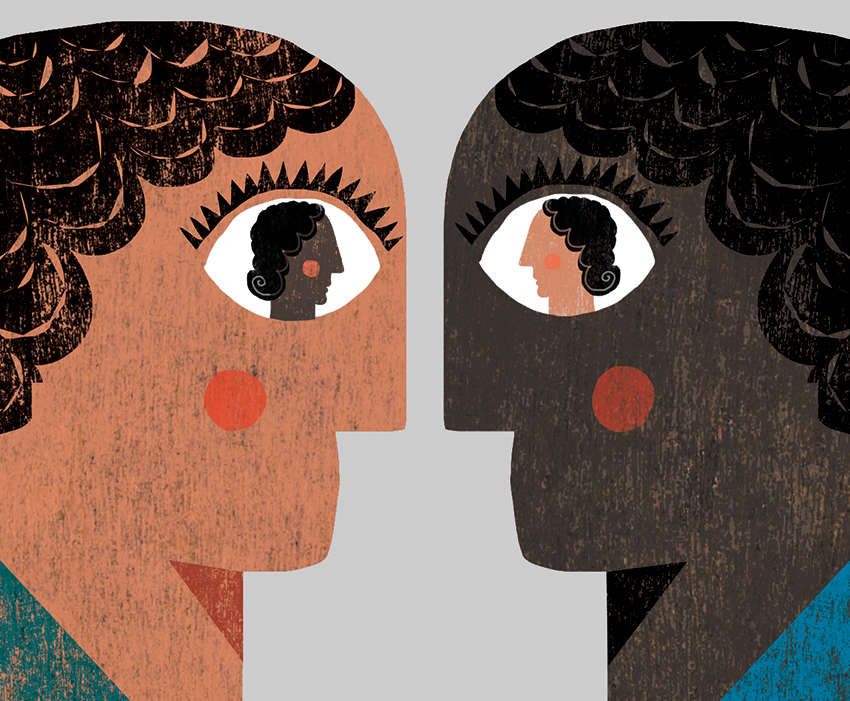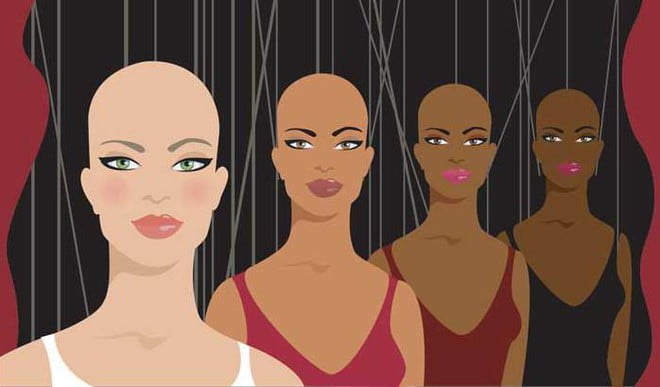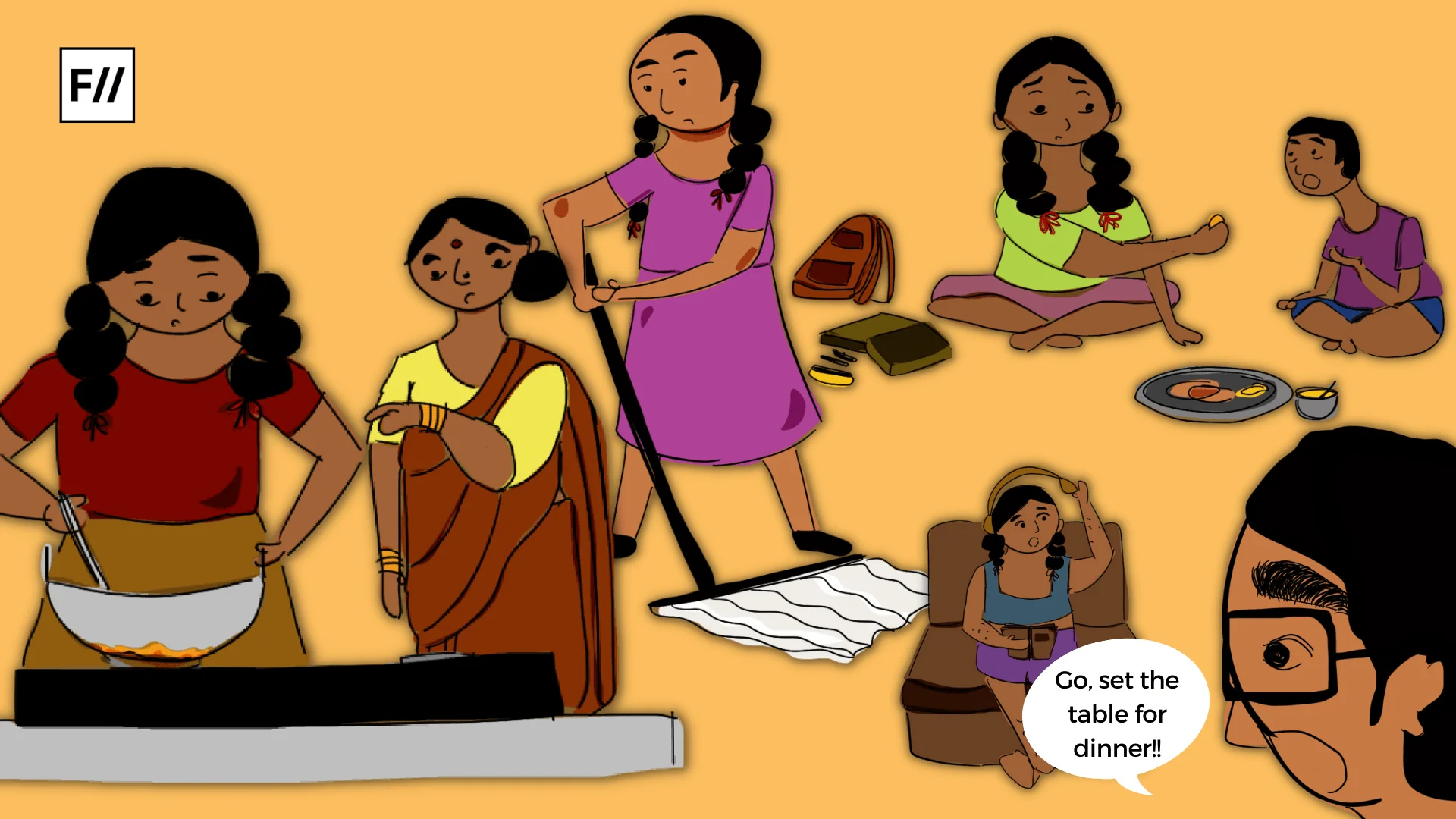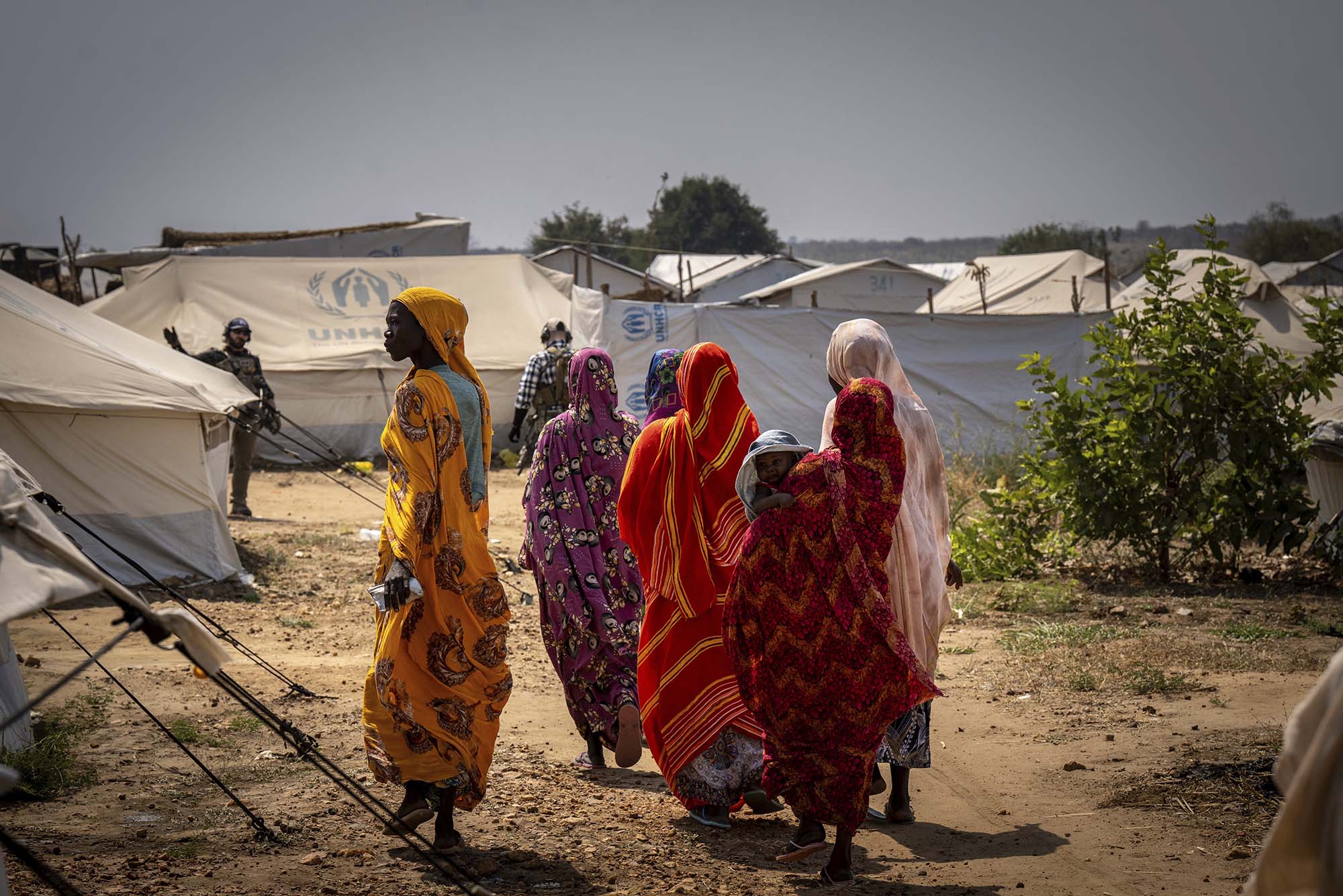I do not see skin colour- is a claim made by many among us. However, the truth remains that we can and do see colours. We are all guilty of reading the bodies of the people we meet, especially in the context of their skin colour. We decide the degree of their attractiveness, innocence, status, power, hygiene, and criminality from the tinction of their skin.
We distinguish between minute tones and shades of brown. You are fairer than them. You are darker than them. You have tanned so much. You have lost your glow. You have turned lighter and pretty – the colour of your skin has been given so many meanings. It can no longer be considered a vital body organ. We are all inherently racist owing to our conditioning, and we must understand race, to unsee skin colours and their patterns of discrimination.
However, colourism in India is entangled with other forms of discrimination and cannot be addressed in isolation. It is also necessary to understand the social connotations attached to skin colour to unlearn our racist biases.
‘Hume re gori!’: Gender and colourism
Colourism, like most forms of discrimination, weighs heavily on women and their life choices. The subject of women’s bodies has been a focal point in feminist research due to the continued subjection and alteration they have been put through over centuries, and across cultures and geographies.
This has influenced how women’s bodies are looked at and perceived by others as well as themselves around the world. Women’s bodies, their anatomies, their contours, their bodily functions, and processes are tailored to fit societal demands and perceptions, often without adding any benefits to women themselves. Ranging from female genital mutilation to the criminalisation of abortion to skin tightening and whitening treatments and colour-correcting ‘foundation’ creams, female bodies have been used as an unwieldy canvass for patriarchal notions of propriety, morality, and beauty.
Generally, feminist scholarship is caught between two different and opposing analyses of beauty, wherein one frames beauty as part of a structure of oppression and the other as a potentially pleasurable instrument of female agency. This is a dichotomy inherent in the conception of a ‘female’ body as it is both a principal means of expression and the site of the embodiment of social controls.
/What-is-colorism-5077380-V1-0586dc2dd0384942b09f6b48b39a6354.png)
Beauty is a gendered, racialised, and contested symbolic resource which is never fully accessible to a coloured woman. Patriarchy demands beauty of women. We are the objects of desire in this heteronormative world. As lighter skin tones are interpreted as beautiful, it is expected of women to embody the same, thus, excluding darker-skinned women of colour from the category of beauty.
This is the reason why most of our actresses have the same shade of acceptable lighter skin tone. While both men and women engage in skin-whitening practices of various sorts, women generally have higher rates of skin-whitening. From unsolicited natural remedy advice to get prettier from random individuals to the description of a girl as ‘dark but beautiful‘ are all examples of passive attacks normalised in our everyday life.
Families comparing the skin tones of prospective brides with their sons to make sure the girl has a lighter skin shade is the perfect anecdote to explain colourism. The preference shown to lighter-skinned women is not restricted to films or arranged marriages, but rather, representations of all forms.
However, the homogeneity of the category of women is contested when it comes to representation. I would like to explain using the example of representation in movies. In most movies, the heroine is always lighter-skinned and several tones lighter than the hero. That is the norm. The exception is that dark-skinned women are widely accepted when it comes to playing Dalit characters. Kammattipadam, Celluloid, Pada, etc., are a few examples of Malayalam movies with such portrayals.
It should also be noted that the colour-coding of characters is an extensive practice in Indian cinema and goes well with Indian common sense. This evident double standard within the working of colourism is often glossed over and signals the lack of intersectionality. In India, savarna women are constructed as ideal, lighter-skinned, big-eyed, and chaste. If you are dark, you look like a Chamar/Pulaya (Dalit).
Racial difference and purity of communities
The biological explanation for racism is based on the notions of racial superiority and purity, which have been disproved by scientific research much of which cites a complete absence of any ‘pure race’ within populations across the world. South Asian ethnicities have evidence of racial mixing which dates back thousands of years resulting in a high level of admixtures in our genetic compositions.
An interesting incident was retold to me by a friend. A Dalit organisation was conducting its annual meeting which requires a membership card for admission. His neighbour told him confidently pointing to his face, ‘No one is going to question my caste identity, my dark skin works as the ID’. Meanwhile, my light-skinned nose stud-wearing mom is accorded passability as a savarna which opens elite spaces closed to others in her community
Studies show that the Indian population descends from a mixture (around 1800- 4200 years before the present) of two genetically divergent populations: Ancestral North Indians (ANI) related to Central Asians, Middle Easterners, Caucasians, and Europeans; and Ancestral South Indians (ASI) not closely related to groups outside the subcontinent, as mentioned by V.M Narasimhan in his paper The formation of human populations in South and Central Asia, published in the Science magazine.
Moreover, research on Indian genomes using ancient DNA finds evidence of pervasive mixing of genes among early populations which has left evident marks on nearly every group in India, as cited by Moorjani, in Genetic evidence for recent population mixture in India. published in the American journal of human genetics. It, therefore, negates any possibility of claims based on racial purity while also highlighting the impossibility of isolating a dominant genomic ancestry in the present population sub-groups in India which could constitute a significant racial or ethnic difference. The Knanaya community in Kerala fighting for endogamy is a recent example of a problematic fight to preserve racial purity.
The invention of the Aryan race theory in nineteenth-century Europe has, as we all know, far-reaching consequences on world history. Its application to European societies culminated in the ideology of Nazi Germany. Another sequel was that it became foundational to the interpretation of early Indian history and there have been attempts at a literal application of the theory to Indian society.
A remarkable difference in the colonialisation of the Indian sub-continent in comparison to other British colonies is the pre-existence of an elaborate social structure solidified over thousands of years that were alien to the colonisers, namely, the caste system. The colonisers were able to exploit the caste system to gain control by merging racial and caste-based theories. To create a loyal community within the natives, the Aryan invasion theory was used to establish that the oppressor caste, especially Brahmins, were linguistically and racially of the same stock (though lesser in status) as the colonisers through common Aryan ancestry while the oppressed castes were racialised, according to historian Romila Thapar in her work The Theory of Aryan Race and India: History and Politics.
Caste as racial segregation, separating the dominant caste Aryans from the marginalised non-Aryans, was viewed as a scientific way of organising a society in keeping with ‘modern’ ideas, but this view was gradually discarded when there was evidence to the contrary. Historically, an earlier form of caste system which started as occupation guilds known as jatis predated colourism and racial hierarchies, as remarked by J.C Nesfield in A Brief view of the Caste system of the North West Provinces and Oudh.
Dark-skinned women are desperately advised by mothers to put extra effort to look prettier and neat. Savarna parents are anxious about the dark skin of their daughters and their lack of savarna aesthetics. The shame works in two ways; she is a woman who lacks the White beauty ideal and her skin questions her uppercasteness. ‘You look like an adivasi’ – is considered as the most horrendous insult that could be directed at a savarna woman. Amalgamation of caste and gender norms to form the unique institution of brahmanical patriarchy, additionally, marginalises Dalit women for their lack of beauty; a characteristic expected of all women under Brahminic patriarchal norms
Therefore, the idea that skin colour is the basis of caste categorisation is implausible. The complexities of caste were simplified through it being explained as racial segregation by British colonial historians, demarcating the Aryan dominant castes from the others. Thus, the immediate sense of superiority felt while being or meeting someone darker than you is the result of all the casteist racist myths fed to us.
The misinterpretation of the caste system created an imagined racial divide between the designated upper and lower castes. This inevitably led to the persisting narrative of upper castes as being ‘lighter and beautiful’ in opposition to the ‘dark and ugly’ Dalits, says S. Yengde, in Caste Matters.
An interesting incident was retold to me by a friend. A Dalit organisation was conducting its annual meeting which requires a membership card for admission. His neighbour told him confidently pointing to his face, ‘No one is going to question my caste identity, my dark skin works as the ID’. Meanwhile, my light-skinned nose stud-wearing mom is accorded passability as a savarna which opens elite spaces closed to others in her community.
Looking the caste: An additional step in your beauty regime
Colourism in its present form plays a vital role in the social space of India by reframing pre-existing social inequalities and tying together imported colonial ideologies, pre-existing casteism, and erroneous biological essentialism. Skin colour and caste have been inextricably linked. Through the mis-association of caste colour, there is a mutual degradation of being dark-skinned and from an oppressed caste, wherein, neither is considered desirable.
These social myths are constantly retold and normalised that it can be found in our language, popular culture, and psyche. ‘Poyi kullikku, parayachi polle undu’ (‘Go take a shower, you look like Paraya girl) and ‘ayyo- ithu Pella karippu aanu’ (Oh no- this is Pulaya Black’)- are normalised Malayalam phrases which invariably have parallels across regions in India.
Nevertheless, all social myths eventually crack at the existence of individuals who do not fit in. A dark-skinned savarna and a light-skinned avarna are contradictions that boggle the minds of casteist (racist) Indians. In the 2018 Malayalam Film Odiyan, Prakash Raj plays the villain nicknamed Karimban (black mould stains) Nair while donning a black face. The conflict between his dark skin and upper-casteness creates a deep insecurity resulting in him developing sadistic tendencies. Karimban Nair acts as a funny oxymoron throughout the movie pointing to the inadequacy of the character. This is a perfect example to point out how we create narratives, and accord and convey meanings around skin colour.
Dark-skinned women are desperately advised by mothers to put extra effort to look prettier and neat. Savarna parents are anxious about the dark skin of their daughters and their lack of savarna aesthetics. The shame works in two ways; she is a woman who lacks the White beauty ideal and her skin questions her uppercasteness. ‘You look like an adivasi’ – is considered the most horrendous insult that could be directed at a savarna woman. The amalgamation of caste and gender norms to form the unique institution of Brahmanical patriarchy, additionally, marginalises Dalit women for their lack of beauty; a characteristic expected of all women under Brahminic patriarchal norms.
A dark-skinned Dalit woman perfectly fits the stereotype and struggles with racist, sexist, and casteist attacks. Dark-skinned men or women are called casteist slurs to be shamed for the colour of their skin, all packed neatly within the box of Brahmanical patriarchy.

We have witnessed resistance against colourism in the forms of campaigns, critical media interventions, photoshoots, revamping marketing strategies, celebrity support, open discussions, and academic work. Colourism has become a mainstream topic of discussion, especially among woke urban circles. This is a commendable feat.
But we refuse to acknowledge that it is also a caste issue. The hatred towards Dalits and dark skin feeds off each other. The Indian hate towards darker skin tones is also derived from casteism. Our skin speaks volumes. It tells us of age-old oppressions which go above and beyond fair and lovely creams and movies.
Colourism cannot be tackled without addressing gender and caste. No movement will ever reach its goals without intersectionality. We cannot free darker skin without freeing the people who represent the dark-skinned. We need to be aware of the connotations accorded to our skin. Why is it loved? Why are people surprised that I am a dark-skinned savarna? What is passability? Why am I more accepted by the savarna circles? Make your dinner conversations uncomfortable. Tell your relative you like how you look. Go out and play in the sun. Talk to your marriage broker. Be a feminist killjoy. One question at a time. It is hard but wonderful.
Also read: Taking A Leaf From Mother’s Book & Embracing My Dark Skin
Uthara Geetha is an independent researcher. She is an Erasmus Mundus Scholar of Gender Studies from University of York (UK) and University of Oviedo (Spain). She also holds a master’s degree in Applied Economics from Centre for development. Her main research area is on the intersection of caste, class and gender. She is on Instagram
Featured Image Source: Times NIE
About the author(s)
Uthara Geetha is a doctoral student at the University of Oviedo (Spain) working on Decolonization, gender and the politics of creative solidarities within new South-Asian Transnational Literature under the Marie- Sklodowska- Curie Actions scholarship funded by the European Union. She was an Erasmus Mundus scholar (2019-21) in Gender Studies University of York (UK) and the University of Oviedo (Spain). She also holds a master’s degree in applied economics from the Centre for Development Studies, India. Her main research interest is in the intersections of gender
with race, caste, and class within a transnational framework inspired by her Dalit identity. In addition to her academic works, she also writes online articles on popular culture from a decolonial intersectional feminist perspective.





Thank you so much for writing this insightful article! In an effort to nip colorism in the bud, I recently published a book called ‘Unfair & Lovely’ which is on Amazon(http://tinyurl.com/unfairlovelyindia). My sincere hope is that articles such as yours and books such as fine will help eradicate this serious issue.